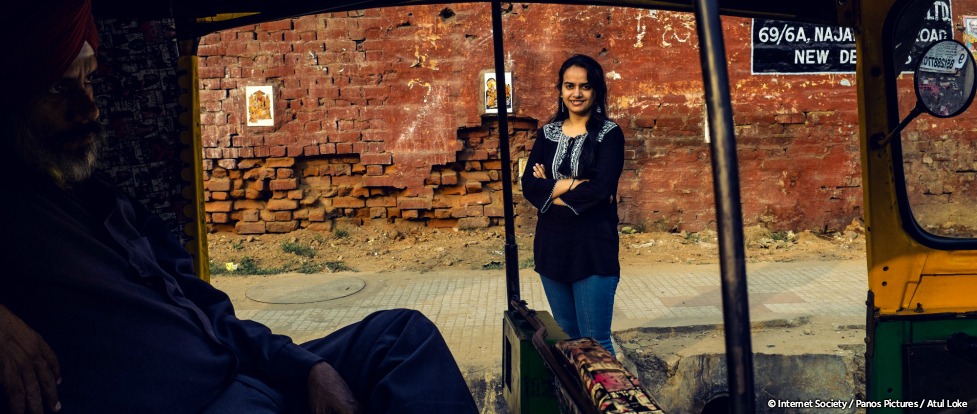There is nothing worse than showing up to a party uninvited.
The awkward conversations, the constant justification of why you’re there, and often facing up to the downright hostility of the hosts. It’s enough to make any of us want to quietly make our way towards the closest exit sign we find and never look back.
And that’s exactly what’s happening to many women around the world for simply taking the time to log on.
For those of us that work with the online world, there isn’t any doubt. Online harassment and cyber bullying are real. In theory, these things can happen to anyone— but they don’t.
They happen overwhelmingly to women.
According to 2014 study by the Pew Research Center, the worst online harassment, including attacks that go beyond name-calling to include stalking and sexual harassment, is disproportionately targeted at women.
Too often women are told they must quietly adapt. If you don’t like the way you’re being treated online, you should log off.
In other parts of the world, women don’t even get through the front door.
So, as the Internet increasingly becomes woven into the fabric of our everyday lives, it means many women are blocked from the limitless opportunities it offers.
This shouldn’t be something that we accept. But the good news is, many women are pushing back.
Some are technologists changing how to build the Internet, some are journalists pushing for the free flow of information, others are bloggers questioning ingrained value system, and still others – millions of others – are logging on time and time again to take part.
Let’s not underestimate this act.
So on March 8th, International Women’s Day, the Internet Society is calling on everyone who believes the Internet should be for everyone to celebrate this spirit of persistence.
Over the course of the day, we will be shining the light on stories of women who are making the Internet a safer and more trusted place, many by logging on.
Take Japleen Pasricha, an Internet blogger and campaigner who leads the Delhi-based non-profit organization called Feminism in India. It offers online spaces for women to write about gender equality issues and combat sexual harassment. Japleen’s research explores challenges to women and girls’ online freedom of expression in India.
Or then there’s Olutosin Adebowale. Olutosin is a passionate gender equality advocate and founder of the non-profit organization, Star of Hope Transformation Center in Lagos. Its programs empower local communities to end child sexual abuse, heal survivors and train women to earn their own income. Olutosin is researching methods for improving women and girls’ Internet access in rural Nigeria.
Or Angélica Contreras, a young Mexican blogger and one of the founders of the Internet Society’s Youth Observatory. She is deeply involved in creating a more inclusive culture online.
By celebrating the work of women like this, we are letting others know they are not alone. There are, in fact, millions of women who are logging on every day.
This act, as simple as it may seem, is essential to creating a culture that emulates the very building blocks the Internet is founded on – diversity, inclusion, and collaboration.
If we don’t celebrate these every day acts of persistence, we stand to lose the millions of voices and ideas that women can bring to the table.
Ideas that are critical to our world.
So critical, in fact, that world leaders agreed that women and girls having access to information and communication technologies would be a key indicator of the success of the UN’s Sustainable Development Goals.
Consider this:
- The OECD estimates that on average, across its member countries, a 50 percent reduction in the gender gap in labor force participation alone would boost GDP an extra 6 percent by 2030, with a further 6 percent gain if gaps closed.
- Eliminating barriers to employment for girls and women could raise labor productivity by 25% in some countries.
- If 10% more girls attend school, a country’s GDP increases by an average of 3%.
This isn’t news.
But a recent report by ONE shows the Internet’s gender gap in the poorest countries grew by 2 percent between 2013 and 2016. Based on current trends, 71 percent of women in the forty-eight poorest countries will still be offline in 2020.
While higher rates of Internet access help to boost GDP per capita, the report notes, cultural, economic, and educational barriers, as well as lack of awareness, prevent many women from accessing and benefiting from online content and services.
For any policymaker that is serious about expanding Internet access to benefit their societies, the inclusion of women needs to be a priority. As described in the Internet Society’s policy framework for an enabling Internet access, infrastructure can only take you so far. An Internet that can support development and economic growth has to be inclusive, trusted and accessible to everyone – and that requires more than fiber and routers. If this idea is now mainstream in global policy fora, from the ITU to the Internet Governance Forum, translating it into reality is the real indicator of success.
From the stories we’re sharing today — and the millions more that are out there — we know that women getting access to the Internet are using it to solve some of the world’s toughest problems. Faster than we ever thought possible.
But for that to happen by 2020, we need to make sure that all people —and especially women —have a voice in building and shaping the tools that will affect their lives.
For the digital revolution to truly be great, it can’t just be for a certain set of people. Join us and celebrate everyday role models of women, everywhere, who are making the Internet a safer place we can all trust.
Want to help?
- #ShineTheLight on a woman who is making the Internet safer on International Women’s Day
- Share the stories of the women of #ShineTheLight
- Got a great idea to close tech’s gender gap? Apply for funding through Beyond The Net

